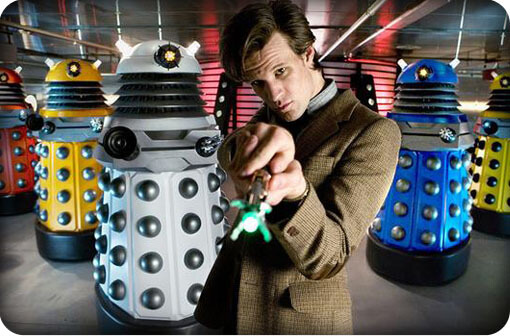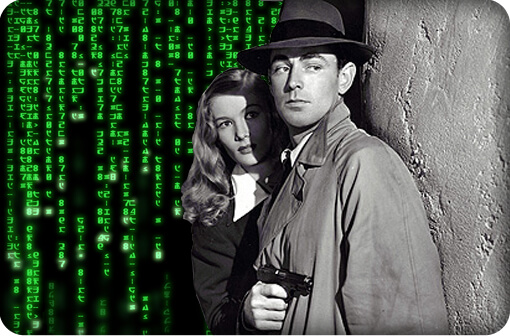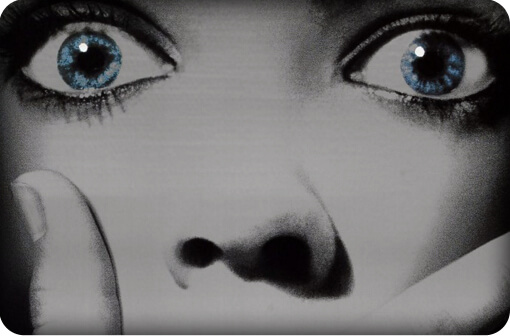Something I seem to hear (or rather, read) quite often these days is Doctor Who fans calling for the Daleks to be rested – or even, Heaven forbid, killed off altogether. What nonsense! And I’ll tell you for why.
Back in 1963, something rather special happened at the BBC, and I’m not just talking about the 23rd of November, either. No, fast forward to the Saturday after Christmas, and that day is when the programme really cemented itself upon the consciousness of a nation. It wasn’t the work of Terry Nation that did it either – you don’t need me to tell you that. For when the Daleks first wheeled themselves out in front of the cameras, we got our first view of possibly the most iconic creation ever in the history of modern entertainment.
The Americans have never even come close.
Forget your Batmans, your King Kongs and your R2D2s and ask yourself if you have ever seen anything as beautiful and as distinctive as a Dalek? Raymond Cusick didn’t deserve a pay rise for that design, he didn’t even deserve a BAFTA. What Mr Cusick should have got was the Turner Prize – or an OBE. For the Dalek is – to my mind, without question – the single most striking thing ever to have been seen on a television screen.
And we should just count our lucky stars that they were created for this little series we love called Doctor Who.
Now, much has been said, of course, about how the general public perceives the show. Usually we’re given an image of a man in a long scarf, with a girl and a tin dog at his side, roaming the universe in a Police Telephone Box fighting monsters.
Wrong.
Fighting Daleks: that’s how the public see the Doctor.
Which isn’t to belittle the programme (or the programme makers), and it isn’t to say that Doctor Who shouldn’t try and be – try and achieve – many other things. But the simple fact is, the Daleks have had such a huge and important impact on the show’s success, they have become completely synonymous with it. Now, there’s nothing wrong with that; for after all (and it’s a point that’s also been made many a time), where would Batman be without the Joker, or Holmes without his Moriarty – or even Danger Mouse without Baron Greenback? Every hero needs an arch enemy (well, that’s an argument for another time), and the Doctor needs the Daleks.
I can’t go on without a quick word on that popularity. The final episode of the rematch story, The Dalek Invasion of Earth (which is the story, after all, that kick-started Dalekmania in the ’sixties) had an audience only a fraction short of three times the size of An Unearthly Child, just thirteen months previously. And while that very first episode might have suffered a little, given the weekend upon which it was first broadcast, it’s unquestionably true to say that the Daleks took the regular audience for an early Saturday evening on BBC1, and at the very least, doubled it. That’s doubled it. Not bad going for some bicycle wheels and a bit of wood.
It also needs pointing out that, even though the first Dalek story was entirely self-contained and left the Daleks (a species indigenous not only to the planet, and the City, but also to the story, in which they first appeared) dead as dodos and without any possible hope of recovery, it was they who were chosen as the Doctor and company’s very first rematch just a year later.
The context and ramifications of this need emphasising.
Doctor Who wasn’t a programme that was designed to repeat itself – other than in terms of alternating historically-based stories with futuristic ones, of course. But just as the Doctor and his companions were intended to land the TARDIS in a variety of different historical situations, so the science fiction stories were supposed to throw up a diversity of locations, plots and characters. The very idea that the Doctor could come up against the same enemy twice in the space of nine stories wasn’t something that the original makers of the programme even considered. The fact that the Daleks were so incredibly popular,however, made it an inevitability.
And it’s also very useful to remember that, had the Daleks not fetched up on Earth in 2164 (or shortly thereafter), the precedence for sequels that led to multiple revisitations of Cybermen, Sontarans and Ice Warriors (among many others) would not have been set. In fact, it’s doubtful that Doctor Who would have lasted long enough for that even to have become an issue, it must be said.
So the Daleks weren’t just important because they elevated the show to such a degree of popularity that its longevity was guaranteed, but they also set the new standard by which the programme would become defined. Not just Doctor Who against the monsters, but Doctor Who inside an ongoing and evolving storyline, in which the Daleks would become a benchmark by which to measure not just future invaders, but also future continuity, too. The Daleks gave Doctor Who its soap, you might say, by becoming something recognisable and memorable (in terms of the series’ ongoing story) that the programme makers, as well as the TARDIS travellers themselves, could evaluate their progress against.
Not only that, they made (and continue to make) a bundle of money for the BBC – and we shouldn’t underestimate the importance of that. It was heavily rumoured recently that the powers-that-be within the Corporation insisted that Steven Moffat should be sure and feature them early within his first series in charge of the programme – and it ain’t like that hasn’t happened before, either. Because in the 1960s, the Daleks happened along the Doctor’s path twice a year, in six-part (as opposed to four-part, which was the general rule at the time) storylines, and this at the behest of Huw Wheldon, BBC Controller. The story usually told is that it was a female relative of his who enjoyed their appearances, hence his support – in reality, it’s likely he had half an eye on the BBC’s bank balance, too.
If we were to rest or retire the Daleks, with what would we replace them? One of the general complaints levelled against their continual reappearance is the lack of invention in the storylines in which they are used, but surely those stories would have remained the same had the presence of the Daleks within them been replaced by something else. Just try and imagine The Parting of the Ways with the Toclafane instead (Russell T Davies’ actual backup plan); the story needn’t alter much to accommodate the change – it’s not the Daleks themselves that’s the cause of any deficiency in the finished product (if indeed there is any), so we can’t lay any blame at their door – and it works the other way around, too. Imagine now if The Doctor’s Daughter had been lifted by their presence in place of the Hath: with a few alterations, the least loved story in Series Four would have become something evocative and spectacular.
It’s not as if we haven’t lived through this before, either. After the Doctor’s first rematch in 1964, the Daleks were brought back (as mentioned earlier) twice a year, for six weeks at a time, to entertain the nation. (The one notable exception was The Daleks’ Master Plan; for 1965, two six-part Dalek stories got rolled into one three-month-long epic.) This was a situation that looked set to continue throughout the rest of the decade; it was only the intervention of Dalek creator Terry Nation, in withdrawing the rights to their use in order to promote his own attempted Dalek series in America, that changed things. In 1967, David Whitaker wrote The Evil of the Daleks, a story in which they were killed off. By the end of the ’sixties, Doctor Who’s ratings had plummeted and the series was on the brink of cancellation.
Coincidence?
Barry Letts saw how unwise this decision had been. At the first realistic opportunity, he brought them back (as the curtain raiser on his second series in charge of storylines), and continued to use them once a year until he left – much the same then as now, then. He even upped the ante on their constant reappearances by persuading Terry Nation to move into uncharted territory: we finally went all the way back to their creation, and met Davros for the first time.
For a half-a-decade stretch of the 1970s, just as we’d seen in the 1960s, the Daleks were a regular presence on our screens. And although Doctor Who’s viewing figures went from strength to strength for a few years after their appearances became more sporadic, this was the only time in the series’ history in which they have done so – and it has to be said, Doctor Who also had a lot more going on to keep it popular during this period as well.
Here’s the rub, though – the point of this piece of writing.
All I’ve talked about so far is how the Daleks have affected the production of Doctor Who, or its perception by adults. But Doctor Who is really made for the 5 to 10-year-olds, or the mythological 8 to 12s.
My earliest, and most vivid, memory of the programme, is of Episode Six of Planet of the Daleks (I was born during transmission of The Mind Robber). In fact, my memory of Episode Six of Planet of the Daleks actually includes quite a lot that, with the hindsight brought to us courtesy of VHS and DVD, didn’t ever actually happen on the screen. In other words, two things: firstly, it was the Daleks who were responsible for bringing my imagination to life; and secondly, in an age of Doctor Who in which the Ogrons, Draconians, Drashigs, Sontarans, Sea Devils, Giant Maggots – and any other monster you care to mention – all made their first or most impressive appearance, it was still the Daleks that made me sit up and take notice. It doesn’t matter that Planet of the Daleks was a so-called “remake” of Terry Nation’s first Dalek story (in those pre-rewatchable television days, this was hardly an issue). For me, it was the first Dalek story.
My most distinct memories of the following series are all from Death to the Daleks, too. And the following year, Genesis of the Daleks came along and blew everything I’d seen to that point out of the water. For a young boy in the mid-’seventies, the Daleks were the most thrilling thing ever.
That’s kind of my point: for a young boy (or a young girl – or a young anyone-at-heart), the Daleks are the most thrilling thing ever. Full stop.
Imagine this: your first experience of Doctor Who is in one of the Dalek-free periods of the show. You have to wait two, three – even four – years before you catch your first glimpse of them. Imagine not having a first Dalek story, in other words. It’s unimaginable.
Every year – every single year – that Doctor Who is on the telly, there’s a new generation of five-year-olds watching it for the first time. And every single Dalek story ever broadcast has been someone’s first Dalek story; someone’s earliest memory of Doctor Who. Someone’s Planet of the Daleks.
We’ve recently come out of a fifteen-year period in which multiple generations of children didn’t have a first Doctor Who story full stop. So do we – do we, seriously – have the right to deprive any generation of five-year-olds, of their first Dalek story?
My argument is not that the Daleks should be rested – and certainly not retired. If I had my way, there’d be a rule that said they had to appear, once a year, every year. So that those simple pleasures that they bring to a young and inexperienced audience would never, ever be denied to anyone ever again.
They’re brilliant, the Daleks. Just brilliant. Why oh why would anyone want to put them to rest?

















 Japanese Spider-man calls in trusty giant robot sidekick Leopardon
Japanese Spider-man calls in trusty giant robot sidekick Leopardon
 Dutch fan Hans Jensen meets his hero Spider-man after becoming Amsterdam’s answer to the web-slinger.
Dutch fan Hans Jensen meets his hero Spider-man after becoming Amsterdam’s answer to the web-slinger.
 Would you mess with Captain Italia?
Would you mess with Captain Italia?
 The comic Captain Chile.
The comic Captain Chile.
 Speedster and lightning-thrower Gundala from Indonesia.
Speedster and lightning-thrower Gundala from Indonesia.
 Godfrey Ho martial arts fest Catman in Lethal Track
Godfrey Ho martial arts fest Catman in Lethal Track



















